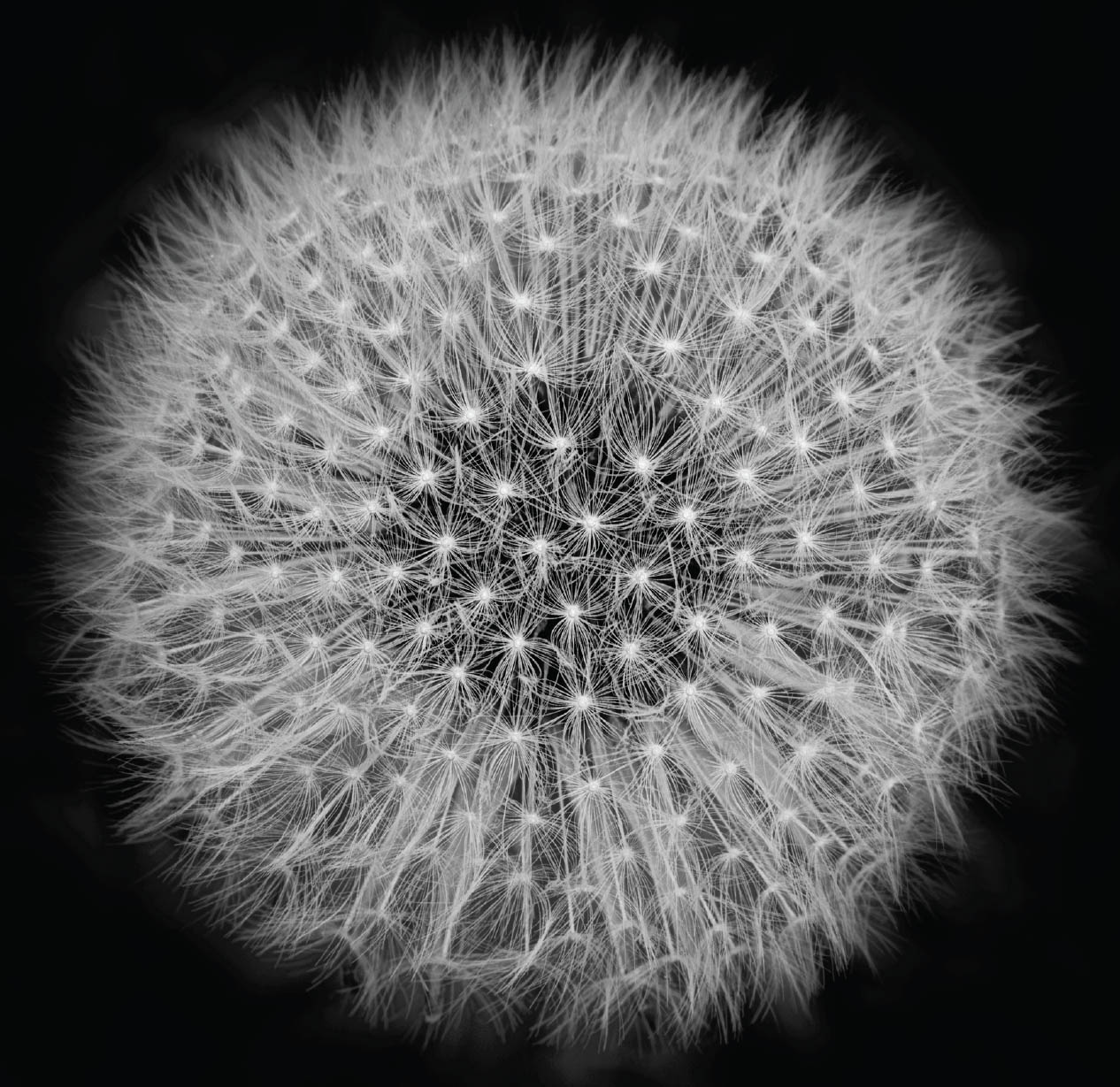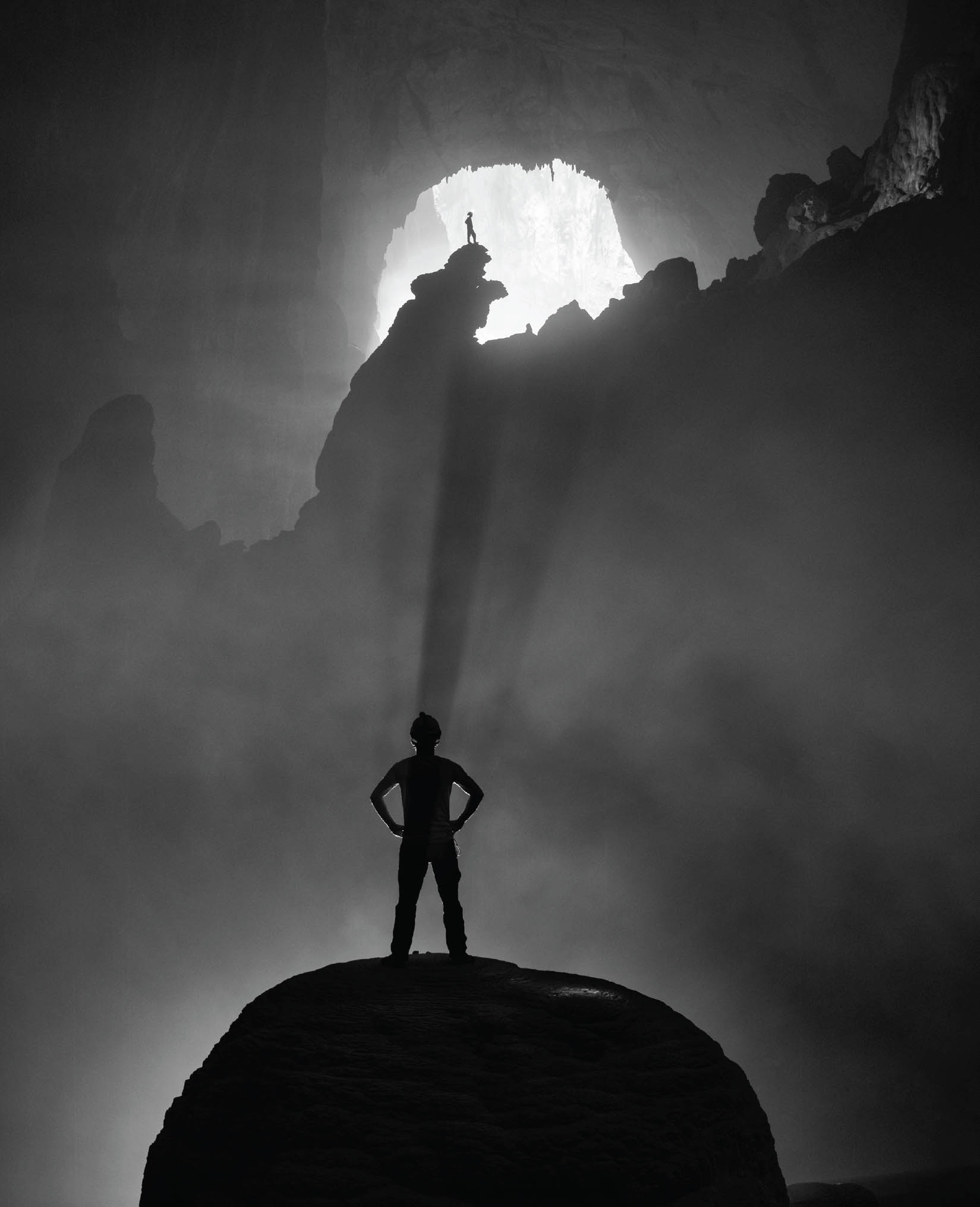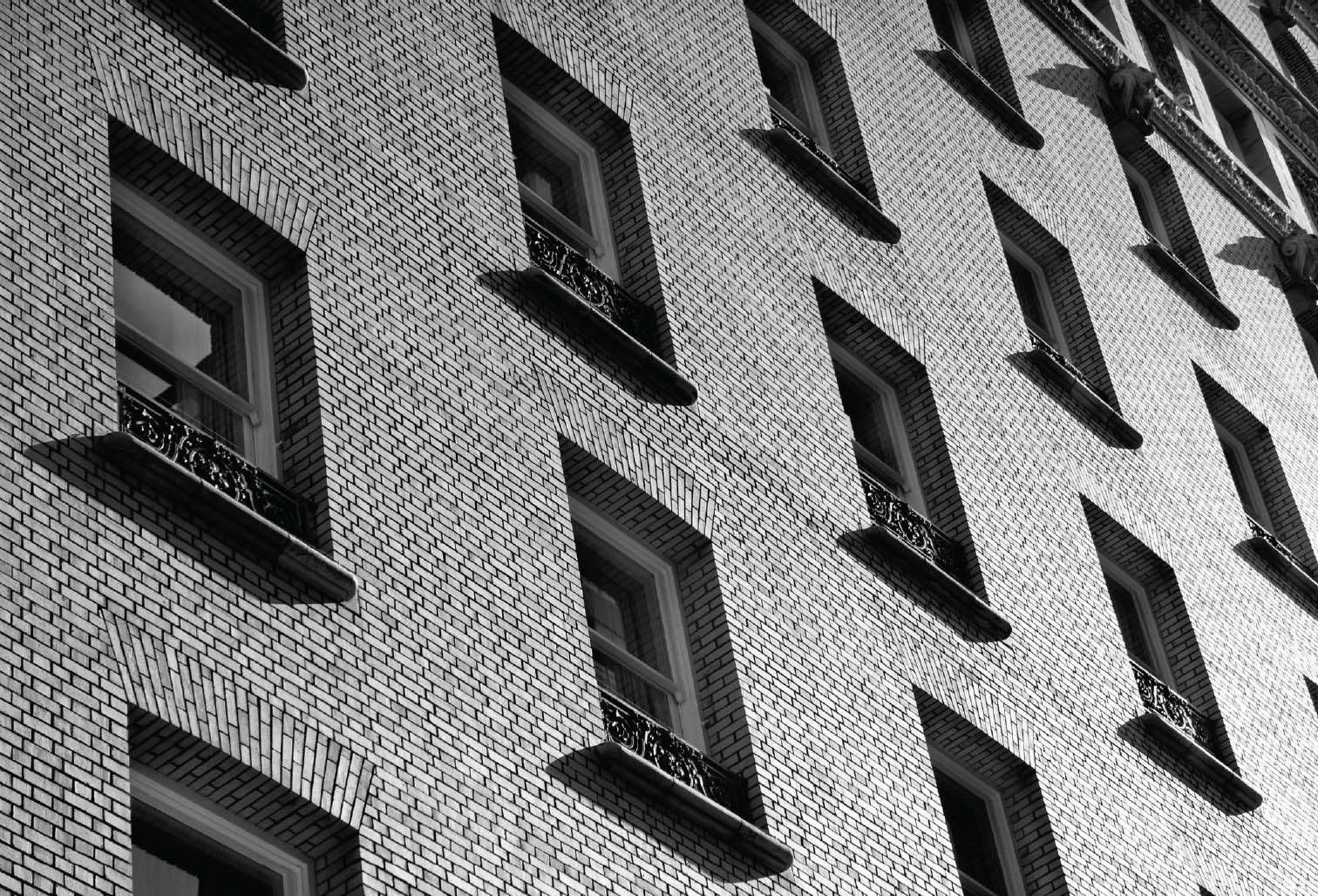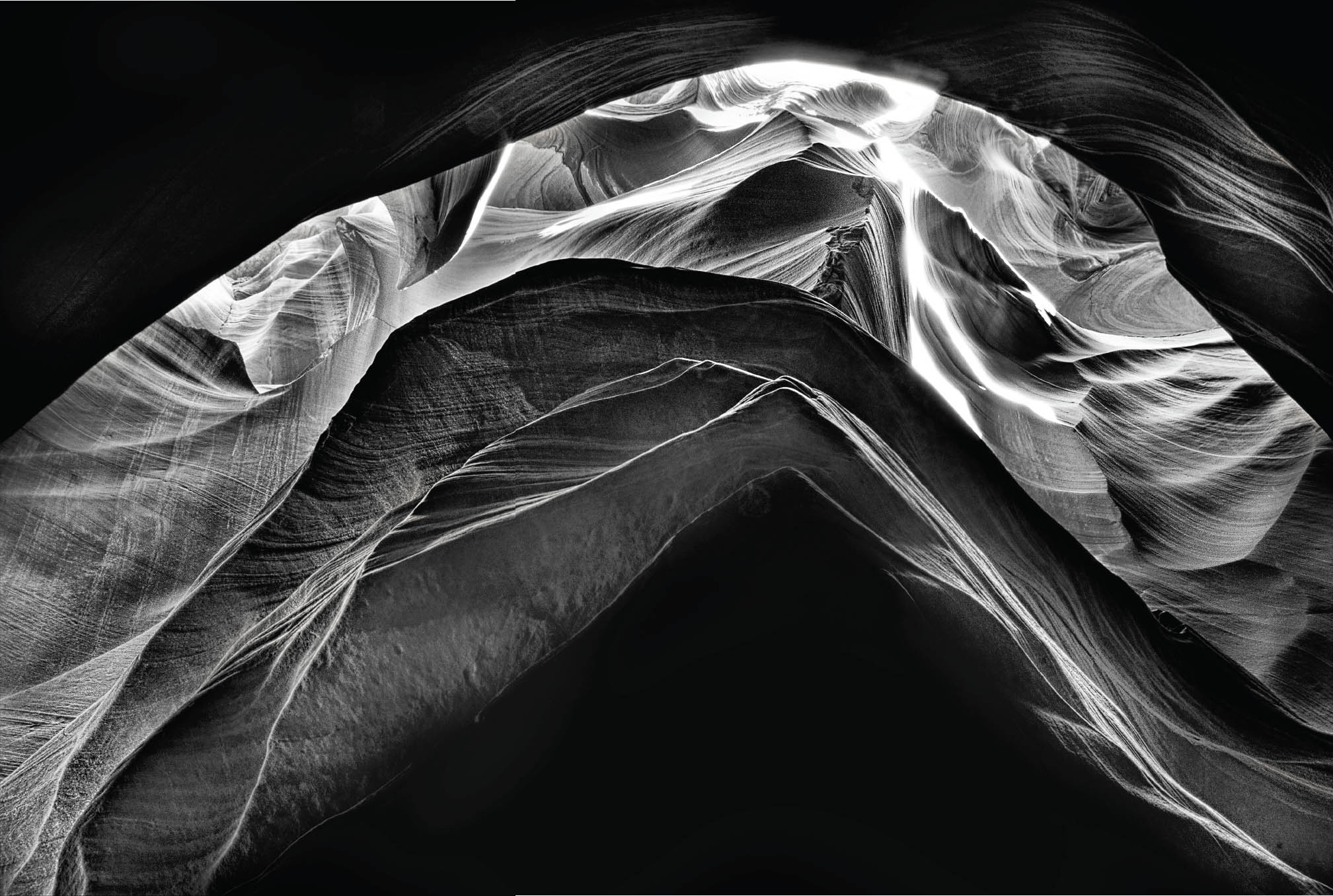Seeing in Black and White
From thought (learning the characteristics that are important to a black and white photo) to action (the act of making a monochromatic image) can be a long journey. Fortunately, there’s an intermediate step: learning to see in black and white. Pre-visualization techniques, explained on pages 34–41, can help you see your photos as they will appear in monotone before you take them, but it is also important to think about the more general issues of seeing.
I consider far more photos in my mind’s eye than I ever end up actually taking. The whole approach to photography should be an inverted pyramid looking something like what is shown below, starting with thought and conception and ending with presenting the work. At each stage in the photographic journey, there are less and less images.
Here’s the explanation for the reduction in quantity of photos. At the top stages of the pyramid, the world is one’s oyster. Everything is grist for the visual mill, and the possibilities have not been limited.
A few of the possibilities out there actually become digital photos, either as planned photos or because something in the world captures the attention of a diligent photographer.
Of these few, an even smaller number will actually be fully processed in Lightroom, Photoshop, or some other software. And fewer still of those processed will actually see the “light of day” and get shown to others.

Online communities of photographers such as Flickr or Instagram have changed this equation somewhat—because it is easy to post images where they may be widely seen. But I’d keep in mind the wisdom a famous art director shared with me when I was beginning my career as a photographer. He told me that if I needed to show more than six images then I didn’t really understand what was important about my work.
Black and white photography limits the choice of subject matter further than it would otherwise be limited—to those images that actually work, or are improved, without color. Therefore, the universe of possibilities is far smaller at each stage of the inverted pyramid than for digital imagery overall.
There’s nothing wrong with limiting one’s photography to specific techniques. In fact, it can be a valuable approach for enhancing creativity. But it remains that not all photos should be shown in black and white.
In my drawing to the left, you’ll note that I’ve shown Thinking and Seeing connected with a double-headed arrow. This is because, like chickens and eggs, it is a little hard to know which comes first. The two activities are interrelated. I prefer to conceptualize first, and then “see” my photos without feeling too bound by ideas about what “should” be in the photo.
My ideas about creative black and white photography are to look for:
- Positive and negative spaces, because sometimes these will create the composition.
- Level of contrast within the image, because high contrast often works well for black and white. (There are some exceptions, such as high-key imagery, explained on pages 54–57 and 180–183.)
- Formalism in composition, since design becomes extremely important to the success or failure of a monochromatic image.
Once the broader concept is in place and one can see and recognize it, the next step is to actively plan compositions, and take actions to realize them. Beyond action is creation, and in today’s digital world part of creation is processing (this is no different than it ever was; the darkroom was, for example, an important part of Ansel Adams’s creative process).
If a tree falls in a forest and no one witnesses it, has it really fallen? So a final step in the process of seeing in black and white is to edit and show your work.
The entire process is represented in the diagram on page 26 as an inverted triangle because, of course, there are many more ideas and concepts than are actually made into photographs, and many more captures that never get in front of an audience.
Finally, I use the pre-visualization techniques and exercises explained on pages 37–38 to try very hard to see the world without color. Seeing without color is not the same thing as seeing black and white; but it is a first step. From a world that has no color, one can start to abstract and pre-visualize what a piece of the world captured in a photo might look like as a black and white work of art.
Dandelion in Calvignac—I always enjoy photographing dandelions gone to seed, and have learned to stop to take the time to photograph a good dandelion when and where I see it. The white lines of a dandelion seed pod lend themselves to monochromatic photography, particularly when the dandelion is brightly lit against a dark background.
Nikon D850, 50mm macro, 1/13 of a second at f/20 and ISO 200, tripod mounted; converted to black and white using Photoshop Adjustment layers and Topaz B&W Effects.
Cave Shadows—The Greek philosopher Plato postulated that we do not see reality. According to this view, our perception is like shadows on a cave wall, and nowhere near to the grandeur of reality, if only we could take our blinders off to see the real essence of things. There is nowhere better to illustrate the platonic metaphor regarding cave shadows than in a cave, and what better cave than Son Doong. Son Doong is the world’s largest cave, located in central Vietnam, near the Laotian boarder. Fewer people have been in Son Doong than have been in space, and I was fortunate to be one of those exploring this cave with my camera.
In this image, a figure on a nearby rock is lit using LED lights from behind, while in the distance another figure is silhouetted against the light from a doline—in cavers’lingo, a breakthrough opening to the outside world above—in the case of Son Doong, the untrackable and wild Vietnamese jungle.
Nikon D850, 58mm, 4 seconds at f/8 and ISO 400, tripod mounted; converted to monochrome using Photoshop Adjustment layers.
Egg Slicer—I placed this egg slicer on a white seamless background, and lit it to emphasize the shadow. There was an absence of color in the composition, and I saw that the contrast between the strong shadow and the rather mundane kitchen utensil could create a striking black and white composition.
Nikon D300, 85mm macro, 6 seconds at f/64 and ISO 100, tripod mounted; converted using Photoshop Adjustment layers.
Windows, San Francisco—Coming out of the dark depths of the BART (Bay Area Rapid Transit), up the escalator onto Market Street in downtown San Francisco, I was at first blinded by the bright sunshine. Squinting, I looked up and saw what could only be an architectural black and white composition with the dark window frames contrasting in a receding sequence with the brighter, almost high-key bricks of the high-rise building.
Sony RX100 Mark 6, 31mm, 1/800 of a second at f/4 and ISO 125, hand held; converted to black and white using Nik Silver Efex Pro.
Structure of Time—The slot canyons on Navajo tribal lands adjacent to Page, Arizona, are spectacular to visit. Clambering through one of these narrow spaces is like visiting a church that worships geology.
As unique as these sites are to visit—and I highly encourage it if you get the chance—these can be a difficult environment for photography. There are three obstacles.
First, a constant flow of people makes setting up a tripod for the long exposures that are required a little difficult. Blowing sand is hard on lenses and it is difficult to keep one’s gear clear.
In addition, this is a high-contrast environment where spectacular columns of light alternate with pitch black dark areas—meaning HDR photography on a tripod is a very good bet.
With this image, I wanted to convey the sense of looking up at light coming down through layers of geology, while keeping significant portions of the image dark and mysterious in order to create a composition that from a formal perspective is largely about negative space.
Nikon D300, 26mm, five exposures with shutter speeds ranging from 3/5 of a second to 20 seconds at f/25 and ISO 200, tripod mounted; captures combined using HDR Efex Pro and converted to monochrome in Photoshop using Silver Efex Pro and Photoshop Adjustment layers..





